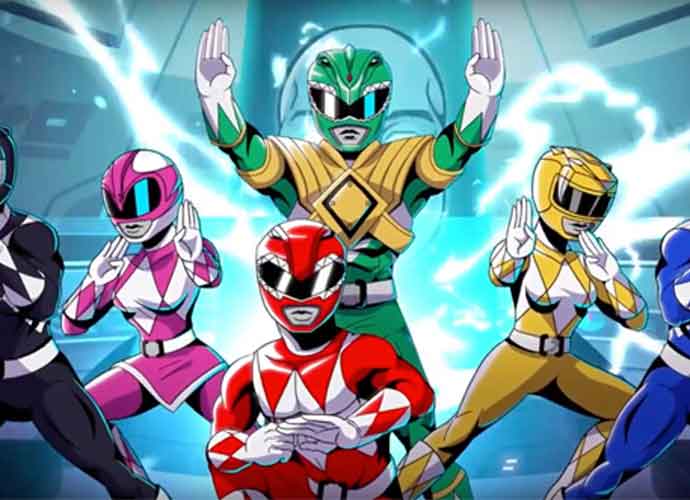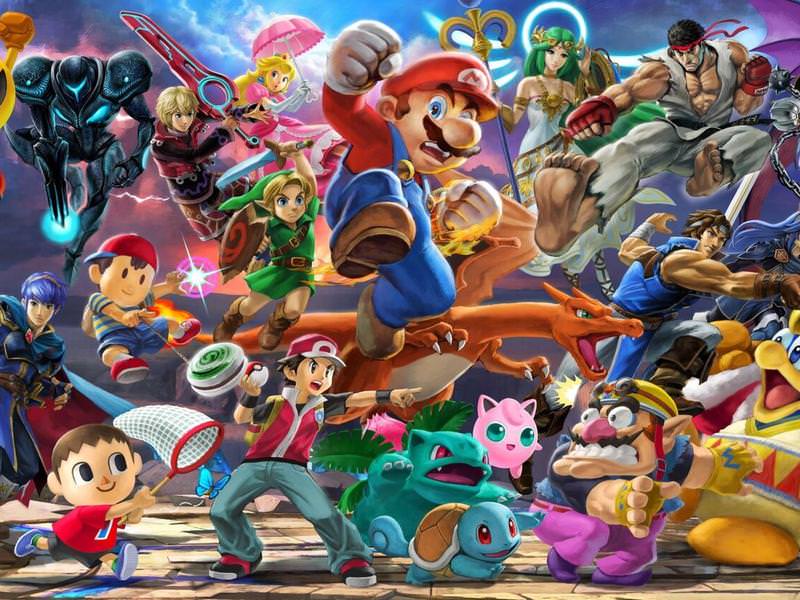‘Mighty Morphin Power Rangers: Mega Battle’ Game Review: Keep It In The Dumpster

Mighty Morphin Power Rangers: Mega Battle
Mighty Morphin Power Rangers was an essential part of my childhood; I remember watching every episode with awe to see how the teenagers would avert Rita Repulsa’s weekly scheme. Lord Zedd usurped her throne for the second season, and he was even scarier! But, somehow, the Rangers always pulled through.
Power Rangers, the westernization of the Japanese Super Sentai series, never quite retained the stature it had in its earliest years, at least as far as I can see. That’s not to say the brand descended into irrelevancy, however; Power Rangers has remained on the air for over twenty years, whilst inspiring two films and a myriad of merchandise. Plus, the original Mighty Morphin program is getting another thrust in the limelight with an upcoming cinematic reboot.
There have been plenty of video games licensed after the numerous Power Ranger teams, but the latest title, Mighty Morphin Power Rangers: Mega Battle, is following the lead of the new movie and returning to the group that started the phenomena. Befitting of the property, Mega Battle is a beat ‘em up, and it’s available for the Xbox One and PlayStation 4. Bandai Namco severed as Mega Battle’s publisher and Bamtang Games was its developer.
So, does Mighty Morphin Power Rangers: Mega Battle live up to my romanticized childhood memories?
Before you begin playing, you select one of the five original Mighty Morphin Power Rangers to play as, with the Green Ranger joining the team after you’ve cleared Chapter 3. All six Rangers have their pros and cons, although you’ll basically receive the same experience regardless of which Ranger you pick. (The other Mighty Morphin Power Rangers, most significantly Tommy as the White Ranger, are available as DLC.)
The campaign is split into six different chapters, which in turn are composed of three levels each. Mega Battle‘s story is loosely based on the first two seasons of Mighty Morphin Power Rangers. Also, while not a deal breaker, the dialog is afflicted with some grammatical errors, which establishes a standard for Mega Battle’s sloppiness.
The first two acts in each chapter are composed of basic layouts for the Rangers to fight across, though the settings were inspired by the show. Bamtang did try utilizing the aesthetics to affect the level design at points, such as the trampoline in the carnival and the fans on the rooftops. Occasionally, more overt methods are taken to distinguish certain areas, such as when the Rangers spontaneously begin riding on their surfboards in the jungle. While these details aren’t enough to make the level design fun to explore, nor is the occasional hidden secret, at least it’s inoffensive.
Unfortunately, the mere act of controlling your character across Angel Grove isn’t fun. The Rangers are occasionally unresponsive when you want them to move, and their fighting skills aren’t much more sophisticated. Our heroes have a light attack and a heavy attack as their primary offensive options. However, our heroes will begin your session unmorphed, which reduces their moveset and makes them weaker. Filling your blue Energy meter enough to transform them is a short process, though.
Once morphed, all Rangers gain their lasers, the Blade Blasters, and their signature weapon. These tools cannot be used infinitely, however, as they’re fueled by the Energy gauge. Recharging the meter occurs naturally by collecting blue orbs or by maintaining long combo strings. Furthermore, if your gauge is filled enough, you can enter Super Mode, which graces your color-coded hero with a surplus of speed. Moreover, you can argument your Ranger’s potential with accumulated experience points gained while playing. Alpha 5 is stationed in specific spots, and visiting him will allow you to buy new attributes and skills.
As a beat ‘em up, Mega Battle’s core facets are its enemy encounters and combat mechanics. The most common grunts are the Putty Patrollers, and they come in several varieties. Some attack directly, others use lasers, and they usually telegraph their attacks with their familiar grunt. They pose little threat and, much like in the source material, only exist to take up the Rangers’ time.
More capable enemies debut throughout the game, although they aren’t more satisfying to vanquish. In fact, these foes, such as the Fright Knight, are often efficiently fought by abusing only one specific method of attack. Moreover, the Rangers’ block mechanic borders on useless, so you’re better off trying to dodge with their roll. Questionable collision detection and inconsistent hitboxes run rampant, which is accentuated by the clunky, stiff animations and the occasional slowdown. Ultimately, Mega Battle’s combat isn’t fluid or satisfying, it’s boring and eventually an exercise in tedium.
The third act of each chapter features an altercation against the chapter’s monster, which generally occurs in three phases. The first is a traditional boss battle, which is a slow affair. The boss loops through its attack pattern and can only be damaged at opportune moments.
After their first defeat, the monster then grows into a giant, forcing the Rangers to call upon their Zords, which then combine into the Dino Megazord’s Tank Mode. While commandeering their robot’s lasers, an awkward genre shift occurs; reticles will appear over select parts of the monster’s body, and you’ll shoot them from a first-person perspective.
The monster will then retaliate by shooting energy balls that damage you upon contact. A hit from your laser will neutralize the glowing sphere, however. Once your foe is done counterattacking, the reticles reappear, and the cycle continues ad nauseum until you eliminate its health. You will never miss any of your targets and these segments accomplish nothing beyond padding the game.
Finally, during the boss’s third act, the Megazord shifts into Battle Mode, although you never control the mech directly. Instead, you attack via quick time events that ask you to correctly replicate a sequence of three-to-five button inputs. The time limit to do so is generous enough, but pressing a wrong button will invalidate your strike and incur damage. The Megazord battles enjoyed considerable splendor in the show, but they’re a shallow experience here. They feel incomplete as well, since the Green Ranger’s Dragonzord is nonexistent in Mega Battle.
Once you begin a mission, you’ll discover that you’re only given one life to clear the level. I don’t feel comfortable declaring that as a problem per se – every act is rather quick and Mega Battle is mostly devoid of any challenge – but I do find it to be an odd design choice given the demographic Power Rangers tends to aim for. I can imagine kids attempting to play through a level, get killed, get discouraged and desert Mega Battle. The Power Rangers titles I played as a kid had a traditional life system, and I feel Mega Battle might’ve benefited from being more accommodating to younger, less experienced players.
Regardless, the campaign is unsatisfying. It won’t take long to finish, as Mega Battle can be cleared in three or four hours. While there’s an inexcusable lack of online co-op, Mega Battle does support up to four-players locally. A couple of bonus modes are unlocked after beating the final boss to extend re-playability, but they fail to provide a more engaging experience than the story. And, much like the last game I reviewed, Mega Battle isn’t a beacon of quality programming. You’ll encounter glitches.
Graphically, Mega Battle is unattractive. All the characters are presented in a cartoony style, with only two of the villains, Goldar and King Sphinx, translating well. Also, as noted, the animation quality in Mega Battle is poor, with rigid gestures plaguing the cast. Ultimately, the game looks cheap.
In terms of its sound effects, Mega Battle is primarily what you’d expect, with voice clips pulled straight from the show, though even this was a bare minimum effort; few excerpts were taken, and certain characters could stand to use more. One example would be Tommy, who fails to utter his “Dragonzord!” when he morphs. You’ll hear some of the sounds, particularly the Puttys’ grunts, countless times per chapter, too.
The soundtrack fares better, and it’s arguably the strongest aspect of the game. Instrumentals of familiar tracks are used, many of which rely on the iconic Mighty Morphin Power Rangers melody. I really hope you like that theme, however, because it’s overlaid across much of the game, including the main menu. (Curiously, the original lyrical version is never used; instead, it’s an edited version of Power Rangers Samurai‘s take.)
With that said, Mega Battle’s audio still coalesces into a repetitive presence befitting of the game, especially as any song that doesn’t echo the recognizable melody is generic. My dad happened to overhear me playing Mega Battle. He described its audio as “maddening.”
Mighty Morphin Power Rangers: Mega Battle is meant to reacquaint you with the original team, but misguided nostalgia is the only reason to play it. Virtually every component of the game comes across as cheap, and the gameplay is bland and redundant; clearing the first of six chapters is enough to experience everything the campaign has to offer. If you’re aching to reminiscence over the Power Rangers, wait for the upcoming movie and hope it’s more successful at honoring our childhood heroes.





